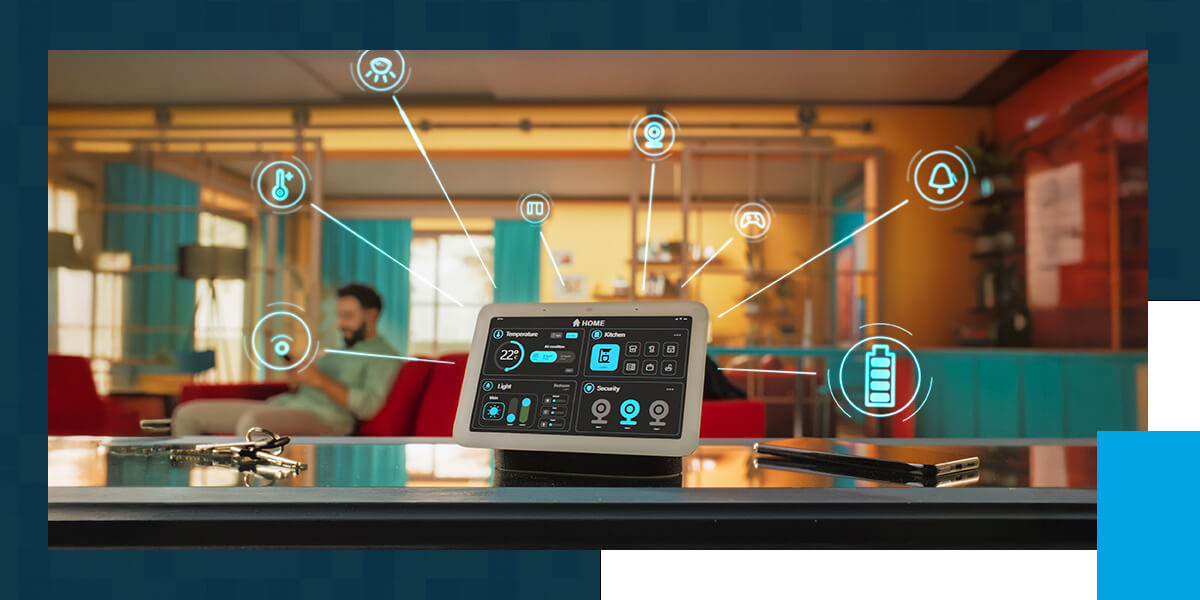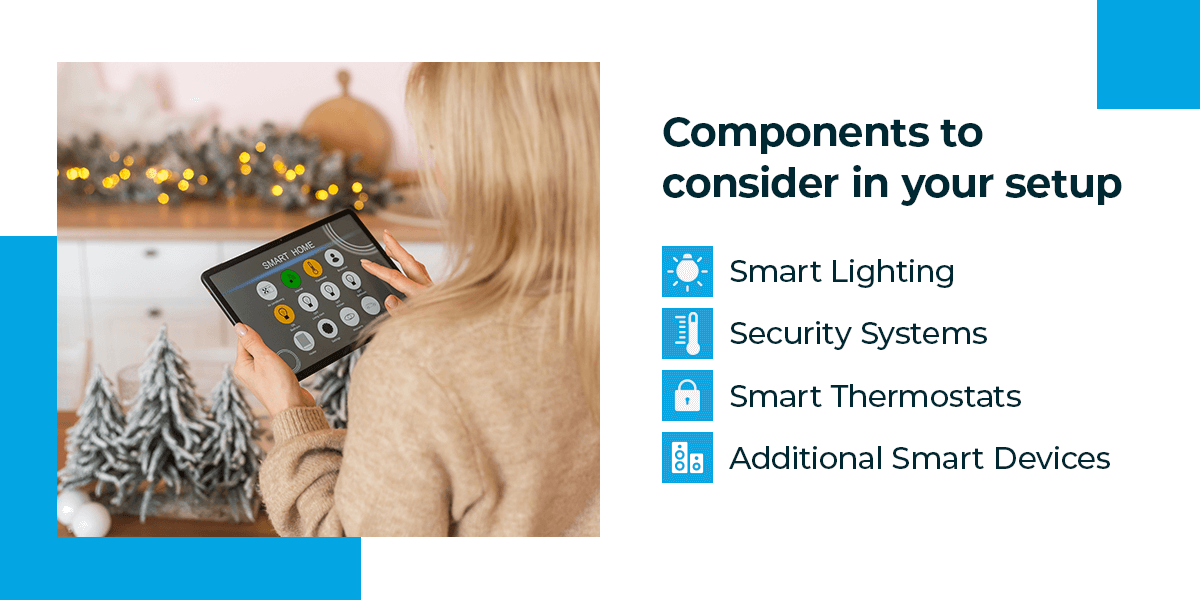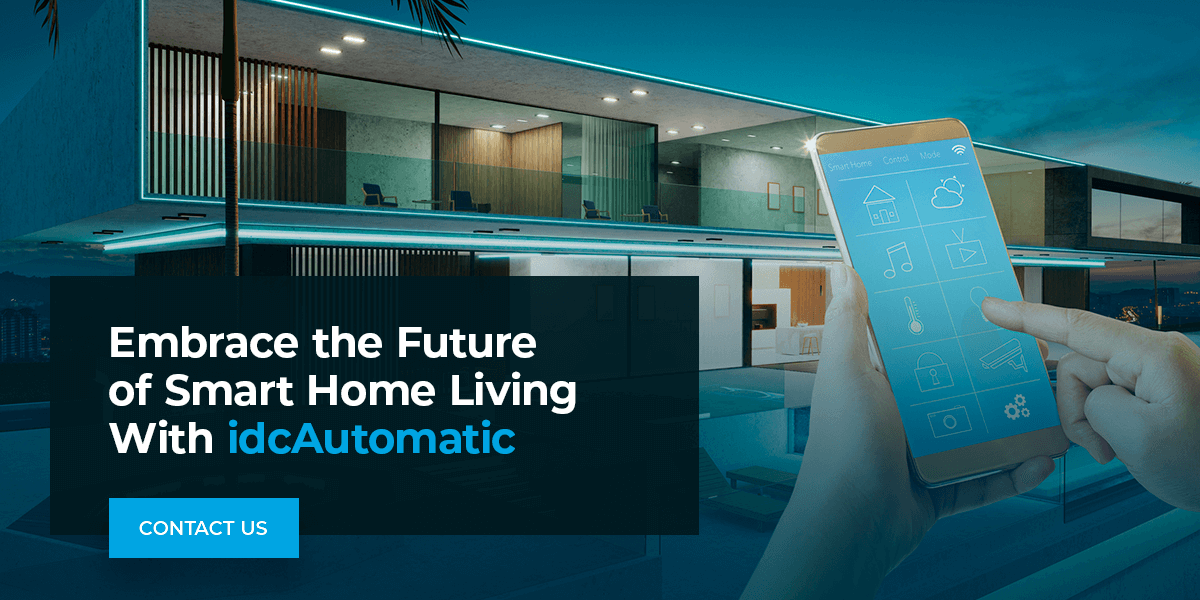Guide to Smart Homes
A Comprehensive Guide to Smart Homes
Imagine a home that simplifies your daily routines, anticipates your needs and keeps you connected at the touch of a button. That’s more than possible with a smart home. In these advanced living spaces, a seamlessly integrated ecosystem of devices enhances your comfort and convenience. From remotely controlling your lights and thermostat to monitoring your home security system from anywhere, smart home technology puts you in control like never before.
Where do you begin? In this comprehensive guide to smart homes for beginners, we’ll walk you through everything you need to know to create a smart home that fits your lifestyle and budget.
Planning Your Smart Home: A Step-By-Step Guide
Creating a smart home involves careful planning before you can enjoy the benefits of this advanced technology. Start with these steps to make a smart home:
- Define your goals: Consider what you want to achieve with your smart home by setting goals and priorities. Your primary objective could be to enhance home security or reduce energy consumption. Identifying your priorities will help you focus your efforts and choose the right smart home devices and systems to meet your needs.
- Assess your Wi-Fi and electrical capacity: Smart home devices often require a stable Wi-Fi network and sufficient electrical capacity to function properly. Assess your home’s existing infrastructure to make certain it can support the smart home devices you plan to install. You might need to upgrade your Wi-Fi router or electrical panel to ensure your home is up to the task.
- Choose a smart home platform: Smart home devices typically operate within a specific platform or ecosystem, such as Apple HomeKit, Google Assistant or Amazon Alexa. Research the different platforms to determine which one best aligns with your existing devices and preferences. For example, if you already use Apple devices in your home, selecting Apple HomeKit may be best for compatibility.
- Establish your budget: A smart home setup can range from affordable individual devices to comprehensive, professionally installed systems. After you review your goals and existing resources, develop a realistic budget that aligns with your needs.
Explore Different Smart Home Setup Options
Achieving the ideal smart home setup is a continuous journey of upgrades and customizations. It’s best to start with key smart home devices and gradually add more depending on your evolving needs. When you’re creating a smart home, consider including some of these components in your setup:
Smart Lighting
Smart lighting enhances the capabilities of lighting systems in your home. These systems connect to the internet, allowing you to control them through an app on your smartphone or a smart speaker like Google Home or Alexa. With the ability to automate and control your lighting systems remotely, you can use them only when necessary.
You’ll find different smart lighting options, from voice-controlled lighting to smart LED lights. LED lighting offers increased energy efficiency, with options that use 75% less energy compared to incandescent lighting. Smart lighting enhances convenience and helps you lower utility bills and save money.
Security Systems
Smart security systems are crucial for home protection. They offer features like remote monitoring, motion detection and instant alerts, which put you on top of your home’s security. Some key components of security systems include cameras, sensors and smart locks. Smart cameras may feature night vision to capture footage in low-light conditions or two-way audio, which allows you to speak to the person on camera. Installing smart home technology requires a personalized approach to ensure proper surveillance coverage of your home.
Smart Thermostats
Smart thermostats are Wi-Fi-enabled devices that can automatically adjust temperature settings in your home to optimize energy use. These systems offer capabilities beyond standard thermostats. They can learn your daily patterns and temperature preferences and develop schedules based on that information. For example, the thermostat can adjust the temperatures to avoid unnecessarily heating or cooling your home when you’re at work or traveling. Smart thermostats offer convenience, energy efficiency and cost savings.
Additional Smart Devices
Once you’ve started creating a smart home system with the key components, you can start adding more devices. You can enhance your initial setup with some of these options:
- Smart appliances
- Smart window treatments
- Smart smoke and carbon dioxide detectors
- Smart entertainment systems
- Smart locks and doorbells
Smart Home Security Tips
While installing smart home technology can make home life easier, unsecured devices can pose several risks that impact your security and privacy. Instead of swearing off smart devices, you can take steps to protect your system and ensure a smarter, more secure home, including:
- Change the default username and passwords during setup.
- Secure your Wi-Fi network with a strong encryption like WPA3 and a robust password.
- Set up multifactor authentication to protect your account if your Wi-Fi password or PIN is exposed.
- Use biometric authentication, such as facial recognition or a fingerprint, if possible.
- Turn off any features that you do not use.
- Do not monitor or control smart home devices using public Wi-Fi networks.
- Regularly update your smart home devices’ firmware.
- Be cautious of phishing scams and suspicious emails.
The Importance of Working With Professionals for Smart Home Installations
It can be tempting to work on the installations for your ideal smart home setup all by yourself. However, professional installation can offer several benefits and save you a lot of trouble. Smart home systems often involve complex wiring, electrical work and network configuration, which demand the specialized expertise of a professional. If these devices are installed improperly, they can lead to safety hazards and system malfunctions.
A licensed electrician installs smart home devices safely and up to code, protecting you and your family. These professionals can also optimize performance and integrate devices seamlessly to make sure you get the best out of your smart home setup. Investing in a professional ensures a reliable, secure and future-proof smart home experience.
Embrace the Future of Smart Home Living With idcAutomatic
Smart home technology is constantly evolving, offering homeowners unmatched levels of convenience, security and energy efficiency. From voice-controlled lighting to smart thermostats, these devices are transforming the way we live.
At idcAutomatic, we are passionate about bringing the benefits of smart homes to our customers. With our expertise in electrical services and smart home automation, we can help you design and install the ideal smart home setup to meet your unique needs.
Are you ready to experience the convenience and security of a smart home? Contact us to discover how idcAutomatic can transform your house into a smart home.
Linked Sources:



